Video of the Week:
Choosing the Best Poinsettia
Upcoming Events:

Mark the date to attend the Kansas Turfgrass Conference in conjunction with KNLA on December 6, 7 & 8 in Topeka.
The conference is an excellent way to learn about turf, nursery and landscape management, visit with old friends, network with new ones, and see all the latest equipment and supplies from local and national vendors.
The conference has been approved for Commercial pesticide recertification hours:
1 Core hour 3A - 8 hrs 3B - 9 hrs
International Society of Arboriculture CEUS and GCSAA education points will also be available by attending the conference.
Take advantage of the discounted preregistration rate and register by November 22! Download a copy of the program, get exhibitor information, or register online. http://2016ktf.eventbrite.com

January 12, 13 & 14, 2017
St. Joseph, MO
For more information, go to http://www.greatplainsgrowersconference.org/
Ornamentals:
Water Landscape Plants if Needed

Although all perennial plants benefit from moist soils before winter, it is especially important for newly planted trees and shrubs due to limited root systems. Even trees and shrubs planted within the last 2 to 3 years are more sensitive to drought than a well-established plant. Evergreens are also more at risk because moisture is lost from the foliage.
A good, deep watering with moisture reaching at least a foot down into the soil is much better than several light sprinklings that just wet the top portions of the soil. A deep watering will help ensure that the majority of roots have access to water. Roots that actually absorb water are killed when the soil temperature reaches 28 degrees F. Those near the surface do not last long in our Kansas winters. We must rely on roots that are deeper, and provide moisture for them to absorb.
Regardless of the watering method used, soil should be wet at least 12 inches deep. Use a metal rod, wooden dowel, electric fence post or something similar to check depth. Dry soil is much harder to push through than wet.
Trees or shrubs planted within the last year can be watered inexpensively with a 5-gallon bucket. Drill a small hole (1/8") in the side of the bucket near the bottom. Fill the bucket and let the water dribble out slowly next to the tree. Refill the bucket once, and you have applied 10 gallons. Very large transplanted trees and trees that were transplanted two to three years ago will require more water.
A perforated soaker hose is a good way to water a newly established bed or foundation plantings. However, soaker hoses are notorious for non-uniform watering. In other words, you often receive too much water from one part of the hose and not enough from another. Hooking both the beginning and the end of the soaker hose to a Y-adapter helps equalize the pressure and therefore provide a more uniform watering. The specific parts you need are shown in the photo above and include the soaker hose, Y-adapter and female to female connector. It is also helpful if the Y-adapter has shut off valves so the volume of flow can be controlled. Too high a flow rate can allow water to run off rather than soak in.
On larger trees, the soaker hose can circle the trunk at a distance within the dripline of the tree but at least ½ the distance to the dripline. The dripline of the tree is outermost reach of the branches. On smaller trees, you may circle the tree several times so that only soil which has tree roots will be watered.
If using a soaker hose, note the time watering was started. Check frequently to determine the amount of time it takes for water to reach 12 inches. From then on, you can water “by the clock.” Use a kitchen oven timer so you remember to move the hose or shut off the faucet. If you are seeing surface runoff, reduce the flow, or build a berm with at least a 4-foot diameter around the base of the tree to allow the water to percolate down through the soil, instead of spreading out. (Ward Upham)
Fruit:
Winterizing Strawberry Plants
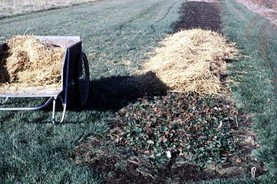
Normally, strawberries should be mulched for the winter around Thanksgiving. However, if temperatures stay abnormally warm, give plants another couple of weeks to become cold hardy before mulching. Mulching plants helps protect strawberries not only from low temperatures but also from heaving damage. Heaving damage occurs when the alternate freezing and thawing common in Kansas winters heave plants out of the ground where the roots are exposed and the plants die from lack of water.
Wheat straw makes good mulch and is widely available. The straw should be spread over the plants to a depth of 3 inches. Shake the slabs of straw apart so there are no large compressed chunks. This straw mulch not only helps protect the plants over winter but can also help avoid damage from late spring frosts by delaying blooming a few days in the spring. Mulch should be removed gradually in the spring as plants begin new growth. Remove enough so leaves can be seen.
Leaving some mulch in place keeps the berries off the ground and conserves moisture. Also, mulch left in the aisles helps protect pickers from muddy conditions. (Ward Upham)
Miscellaneous:
Ashes is the Garden
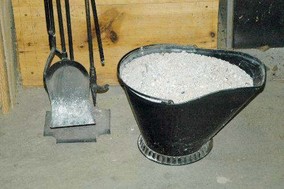
Storing Power Equipment for the Winter
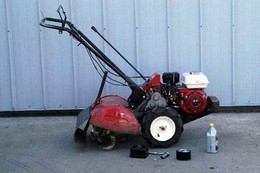
Many mowers and tillers will have a foam prefilter that can become filthy with use. If allowed to become too dirty, engines will run poorly or may not run at all. Sharpen blades, clean tines, tighten screws, replace broken parts and do all the other things needed to keep equipment in good shape. Though such maintenance takes some time and effort, it pays for itself by reducing frustration and lost time due to poorly performing equipment during a hectic spring. (Ward Upham)
Contributors: Ward Upham, Extension Associate
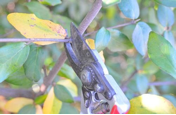
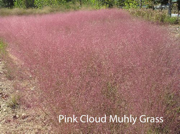
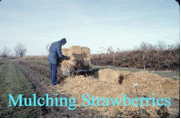
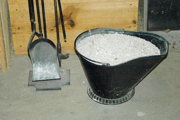
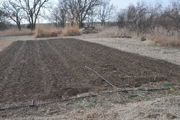
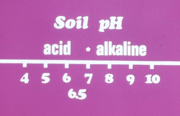

 RSS Feed
RSS Feed
